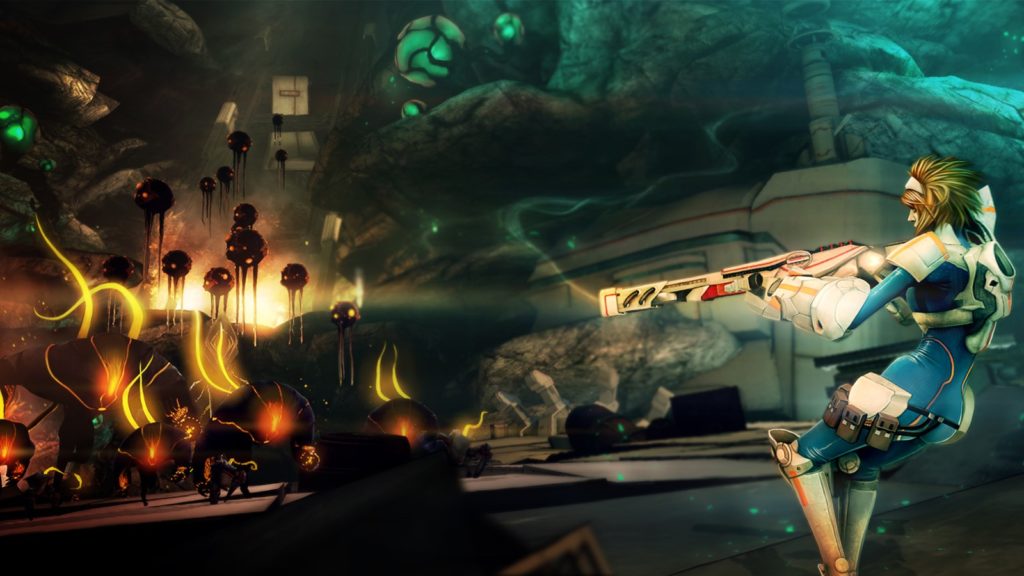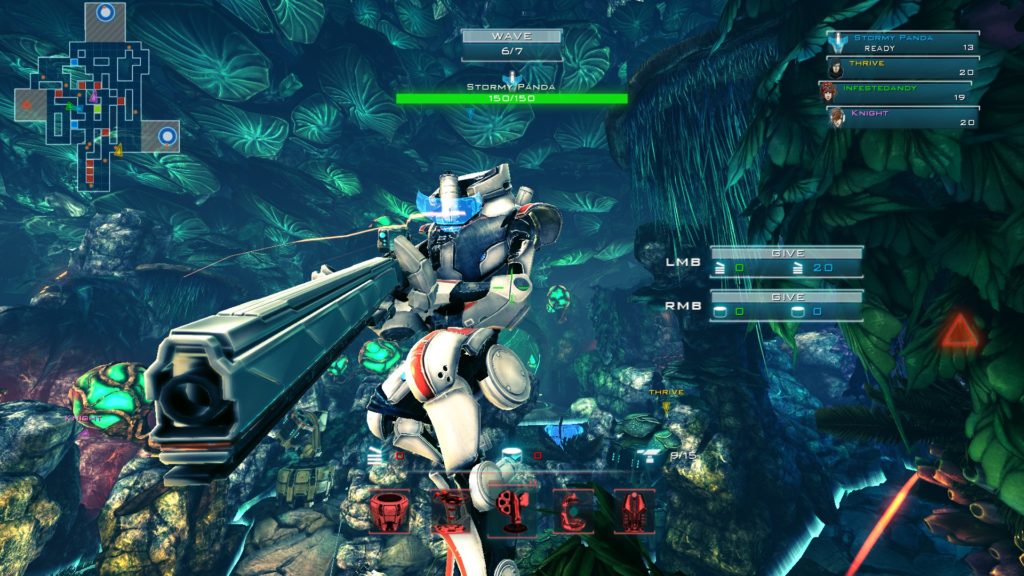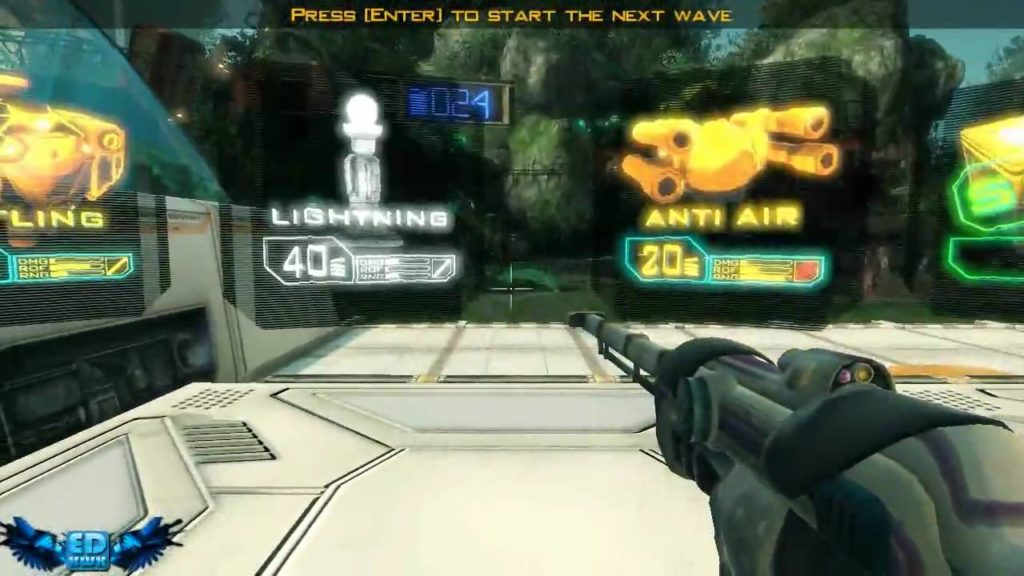Tower Defence, originally invented as a web-based strategy experience, is quite a bit like a real time strategy game. The difference is that your only focus is defense (your goal is to prevent waves of enemies from penetrating your defences and reaching the goal) and you don’t tend to build mobile units, only defensive structures (called “towers” for simplicity). And, generally, time is a less significant pressure than how you construct your defences because, like in Sanctum, you trigger the next wave of enemies when you’re ready.
The difference with Sanctum – made by indie developer Coffee Stain Studios – is that it adds elements of a first-person shooter into the mix. Yes, you still need to construct towers and yes, there are still waves of enemies that you need to defeat to succeed. However, when the waves come, you go from being the guy deploying towers to something much like a mobile tower yourself. Controlled from the first-person, you position yourself as best you can and unleash any of your personal arsenal of weapons on the incoming enemy horde.
Construction of towers is also handled from this first-person, grunt-on-the-ground perspective which sounds good in theory but it ultimately frustrates and is the most significant let-down of the experience. There’s no time pressure here, so it doesn’t impact your ability to succeed in any way, but it does definitely frustrate and you never really get used to it. You can zoom out to a map view to get a better idea of what’s going on but you can’t build from this view and, thanks to an isometric perspective, even this view irksomely makes it harder than it should to get a real idea as to what’s going on.

The first-person stuff is a fun addition to the genre, swapping out the hectic building that you’d normally expect to do during a wave (which you can’t do here at all) for running about, shooting at things. This is no tack-on, either; you need to be effective during a wave in order to survive it – you can’t simply rely on your towers. You can upgrade your guns much like you do a tower, adding a new layer of strategy as to how you should spend your incoming resources. It’s a cool twist and it meshes with the core tower defence gameplay in such a way you’ll be surprised no one ever thought of it before.

Visually it’s interesting. It’s clear the developers have gone for a certain style and have been restricted by the realities of indie development (budget, time, etc) from quite nailing it. What’s there is cool, with strong enemy visuals being a standout, but it can be a little rough in parts. It’s not a AAA budget game, so don’t expect AAA budget visuals and you’ll probably be impressed.

The performance of the game was a bit disappointing – as discussed above, it doesn’t have the visual impact of a top-of-the-range game so it seems surprising just how powerful a computer you need to run it. When I started writing this review, my machine was a pretty low-end but still dual-core intel-based computer, with a decent PCIe videocard and so on, and the game ran poorly – even on the very lowest possible settings. Mid-way through I upgraded to the top-of-the-line i5 processor / SLI Nvidia graphics, at which point things opened up quite a bit, but I definitely would be careful to ensure your rig meets the (high) minimum specifications before jumping in. A netbook game this is not.
Sanctum is an accomplished hybrid of tower defence and first-person shooter. It’s got its quirks but, really, what game hasn’t? It’s cheap enough, has loads of personality, and shows the kind of promise that suggests that a sequel (should we be so lucky) will knock it out of the park. Help make that happen and get yourself a worthwhile experience at the same time by snagging a copy yourself. It’s about $20 or just over $30 if you buy a two-pack so you can play it with your friends.